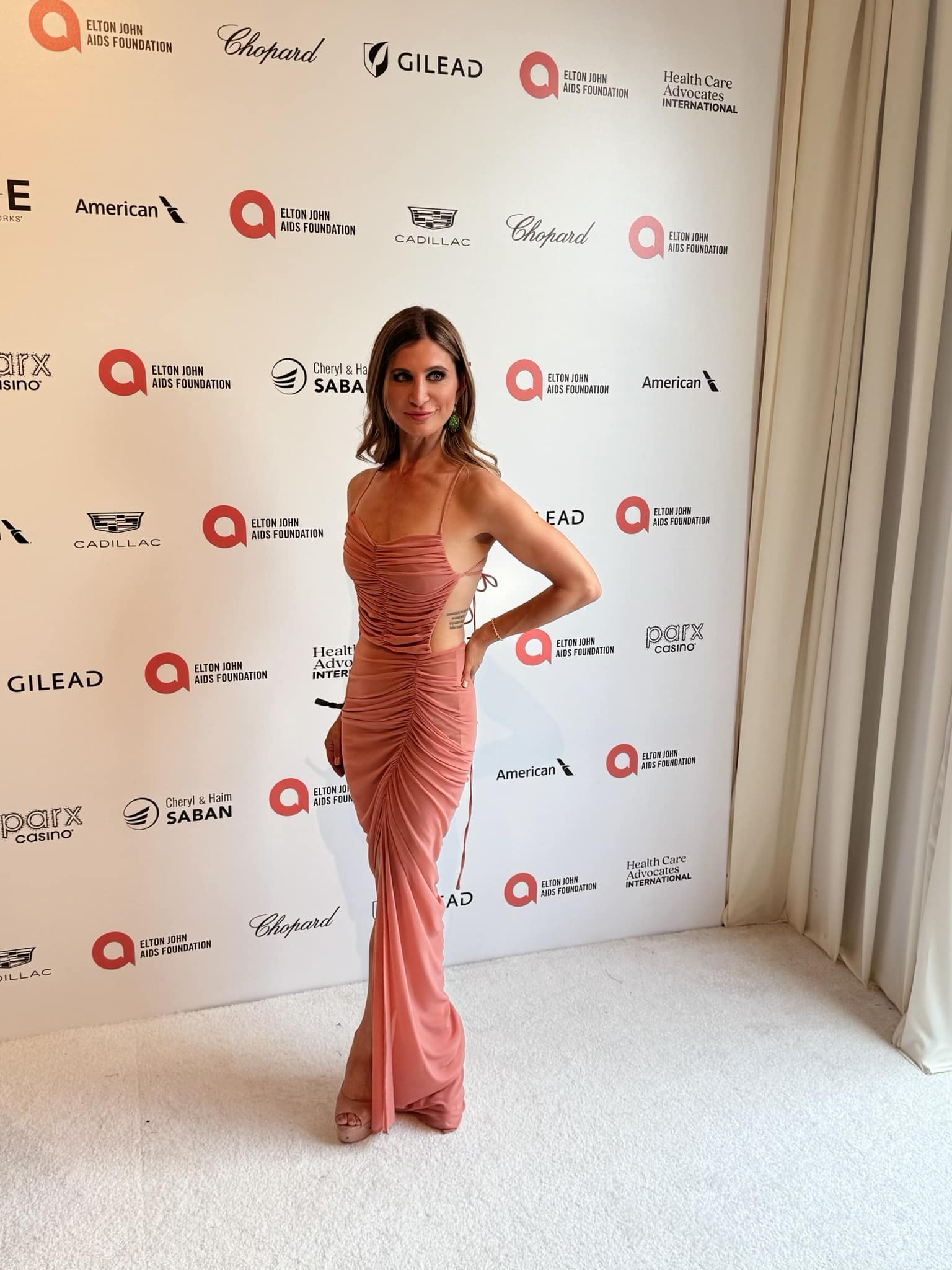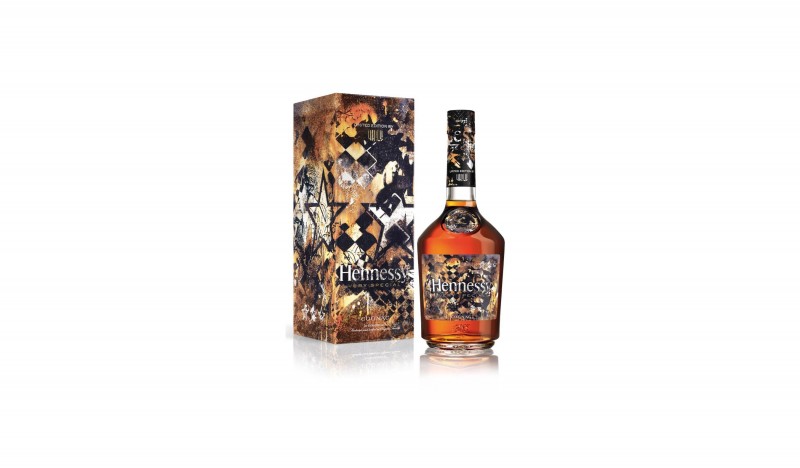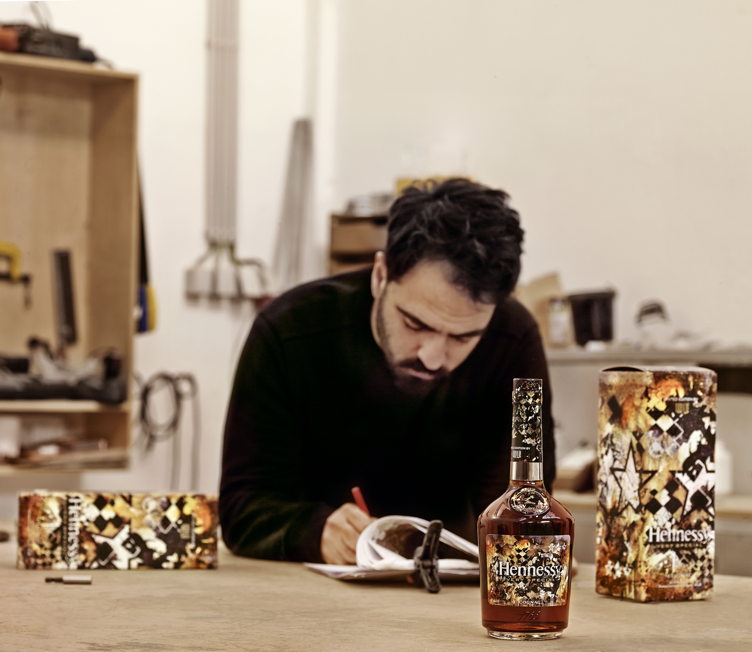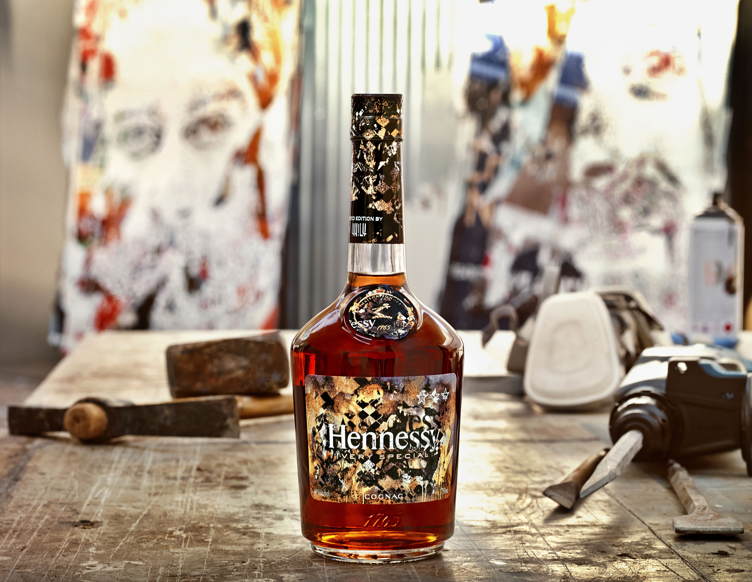Street Artist Vhils On His New Collab With Hennessy, The Evolution Of His Art + On Being A Disruptor
 Growing up in the fast-changing capital of post-revolutionary Portugal, Alexandre Farto—a.k.a. “Vhils”—needed an outlet, and so, he turned to art. Having established his signature on city walls in the form of graffiti, the rebellious teen quickly moved on to pioneer a new form of urban expressionism through monumental portraits cut, composed, chiseled or exploded from built-up layers of paint or paper, stone, wood, steel or concrete and infused with the color and energy of the hip-hop music scene.
Growing up in the fast-changing capital of post-revolutionary Portugal, Alexandre Farto—a.k.a. “Vhils”—needed an outlet, and so, he turned to art. Having established his signature on city walls in the form of graffiti, the rebellious teen quickly moved on to pioneer a new form of urban expressionism through monumental portraits cut, composed, chiseled or exploded from built-up layers of paint or paper, stone, wood, steel or concrete and infused with the color and energy of the hip-hop music scene.
Now, the artist is expressing himself in a new capacity, by following in the footsteps of KAWS, Futura, Os Gêmeos, Shepard Fairey, Ryan McGinness, Scott Campbell and, most recently, street artist JonOne by designing the latest “art” bottle for Hennessy. For Hennessy V.S Limited Edition by Vhils, which debuted in June, the artist selected hallmarks from the Hennessy archives, such as the Three Star emblem, and reproduced Cognac’s amber hues through experimentation with paper, heat and acid. In keeping with his monumental works, he created a composite portrait that taps into the essence of Hennessy’s identity while speaking to each viewer on an individual level.
Here, he discusses his newest collaboration, as well as the evolution of his work and why he’s totally okay with being dubbed a “disruptor.”
Tell us how the collaboration with Hennessy came to be.
I’ve done very few collaborations in the past. I did an important project in 2011 which allowed me to establish this studio, but that was about it. But then I had a proposal from Hennessy to collaborate on this project. And knowing the history of Hennessy’s collaborations with artists over the years, such as my friend Shepard Fairey, with whom I have worked on many projects… I mean, it was an honor to be invited, and to be part of a project created by a brand to elevate this kind of art. They are doing collaborations with artists the way they should be done – through an open dialogue with the artist, and by actively supporting the concepts and ideals of the artist. I know from a lot of artists they’ve worked with, that Hennessy has often made a lot of concessions in an effort to respect the artist’s work. I think that’s very honorable, and it’s one of the reasons I decided to collaborate with Hennessy.
What was your inspiration for the bottle?
I had this idea of creating a portrait which was looking ahead, but with the past represented by all these graphic elements from Hennessy’s whole history which I’d discovered in the archives. That was the idea, to create this look forward, while remaining conscious of this whole past, because I think that’s what really fascinated me at Hennessy. It was all these examples I’d seen of respect for heritage, for process, for history really. Besides all the changes in communication styles and strategies, the essence of the idea of cognac is very pure still, it’s still the same process, after all this time. It’s a respectful nod to the past, to this heritage and savoir-faire, but with this portrait looking forward…
You’re often called a “disruptor” or “urban archaeologist.” Are those epithets correct? Why or why not?
I do see myself almost as an archaeologist, trying to expose layers of change, and to make people reflect on the impact of that change on themselves.During my childhood, I witnessed the evolution of Lisbon, all this accumulation of layers was becoming faster and faster, with new trains stops being created, the infrastructure growing, the pace of change accelerating more and more. For me, my work was about trying to find the essence behind all this transformation, in a country where so many people had nothing for such a long time, and then suddenly there’s a revolution and everything changes overnight. And that’s why I started this reflection on what impact the public space has on people, and why I chose portraits as the main focus of the work.
How has your work evolved over the last five years?
I believe that both my artwork and the reflection it materializes has become more mature and global. I’ve spent a lot of time traveling around the world and working in many places over the last five years. This ongoing experience of other realities has been very important, as my own work also becomes increasingly global. I’ve been working with the people and the materials of many cities and placing them into dialogue with those of other cities, highlighting by contrast and juxtaposition the similarities and differences between them. My work has also become increasingly abstract in some ways, reflecting the way how our identities have become more and more impacted by the intense visual discourse present in our public spaces. In material terms I’ve continued to work with some of the media I’ve been using over the years that are still giving me new directions, such as the carved posters and wooden doors, among others. At the same time, I’ve also been increasingly experimenting with new media and processes, such as concrete and cement sculptures which have this brutalist materiality I love to work with, and large-scale immersive installations both in the form of slow-motion videos that enable us to take in the details of the mundane reality of a particular city, or in flickering video installations that enable the viewer to experience the relentless bombardment of mass culture and advertising on the life and identity of the individual. These are just some of the directions I’ve been exploring.
Where would you like to take your work in the future?
It’s hard to look into the future, but I definitely want to deepen this reflection on how globalization and the dominant model of development that has been imposed on us continues to affect us as individuals and as societies in both local and global terms. I want to keep traveling to as many locations as possible in order to witness and experience first-hand the transformations that are shaping the world today, to capture something of this critical and unique moment. I want to continue to bring these issues into the open, to help make visible the invisible. Development and growth are good, but not only should they be based on our needs and not on our desires, they should also be inclusive and sustainable in the long run and oriented towards the well-being of all. This rapacious model that places the emphasis on over-production and over-consumption is even mathematically impossible to sustain. We have opened up a new Pandora’s box, the consequences of which we all ignore. It seems to me that we’re absurdly sacrificing both our own existence and that of other species and the planet for short-term material comfort. I want to continue to speak about these issues and contribute towards a rational discussion on them. I also want to continue working with the forces of chaos present in the city and making them part of an art that is as transient as the material reality that surrounds us, an organic, evolving art which can help humanize our cities and our lives.
Your bio states that you value the idea of turning ordinary individuals into icons. Can you explain this, and the rationale behind it?
In general, my portraits are of anonymous people. It’s about making an homage to the everyday heroes of the cities. But it’s also a reflection on the impact the public space has on us. For example, when you carve on a billboard, you are digging into all these messages that are directed at us, and asking to what extent our desires are really our own, or are imposed on us by a holiday tour outfit or credit card company. A big part of my work is trying to make people conscious of these things.
Who, in your opinion, is the greatest living artist? What is your favorite piece by this artist?
It’s very hard to pick just one out of the many talented artists working out there today, so I’ll simply list four of my favorite living artists in no particular order: James Turrell, Banksy, Katharina Grosse, and Barbara Kruger.
















